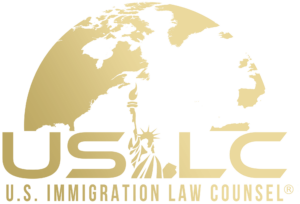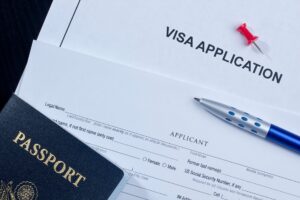Are you wondering what happens if you overstay your visa and what the visa overstay consequences are? This is a very common question, as it is a situation that many individuals may find themselves in if they overstay in the U.S. with a visa. So, keep reading to find out what happens if you overstay your visa and how to fix an overstayed visa while avoiding the most severe consequences of this mistake.
What Constitutes a Visa Overstay?
There are expiration date rules you must follow if you have come to the United States on a visa. In the majority of instances, there will be a time limit on your visa, which requires you to return to your home country to avoid overstaying. If you do not go back before your visa expires, this will be considered overstaying, which could result in you being labeled as an unlawful presence.
Unfortunately, many people end up overstaying on their visa without actually meaning to. The most common reason for this is confusion about the I-94 expiration date rules, resulting in you thinking that you have longer in the U.S. than you actually do. Or you may have simply lost track of time.
There are also rare instances where an emergency may come up, leading to you having to stay in the U.S. longer than expected. However, overstaying is taken very seriously, as some people intentionally do this in the hope of adjusting their status later on so that they can remain in the U.S. without going through the correct process.
Consequences of Overstaying a Visa
Now that you know what overstaying a visa means, what happens if you overstay your visa in the U.S.? This is a very serious immigration offense that can impact your present situation as well as your future immigration opportunities.
Here are some examples of what can happen if you overstay a visa.
Re-Entry Bans
Staying in the United States illegally and accruing unlawful presence comes with serious consequences. In many instances, this will result in a re-entry ban, prohibiting you from being able to re-enter the U.S. in the future.
How long this ban is will depend on how long you remain in the United States without having legal status. For example, overstaying 180 days to a year can result in a three year re-entry ban. While overstaying a year or more can result in a 10 year re-entry ban.
Deportation
Overstaying a visa can often lead to deportation proceedings if you are caught by immigration authorities. Not only can this completely uproot your life and create a great deal of stress, but deportation will also reflect poorly on your immigration record, possibly making it more difficult to return to the U.S. in the future.
Loss of Immigration Benefits
Depending on the type of visa you qualify for, you most likely have access to a variety of immigration benefits such as work authorization, driver’s license renewal, or access to public benefits. However, if you have overstayed on your visa, you will automatically lose these benefits.
Future Immigration Limitations
Something you have to remember about immigration is that how you behave can directly impact your future immigration options. For instance, those who have overstayed a visa may find that it is more challenging to obtain a work visa, student visa, or green card in the future. You may also find it more challenging to qualify for different visas since a history of overstaying will lead to more scrutiny when you apply for visas.
How to Fix an Overstay: Legal Options
Even though overstaying a visa is serious, there is immigration relief after overstaying that you may qualify for depending on your circumstances. Here are some of the best examples of how to fix an overstayed visa:
- Adjustment of status: After a visa overstay, one of the best options is to marry a U.S. citizen, which would allow you to enter the immediate relative visa category. This category is exempt from many immigration barriers, including the no unlawful presence bar and annual caps.
- Waiver of inadmissibility: Obtaining a waiver of inadmissibility after overstaying is a great option to take advantage of. This is also called visa overstay forgiveness, and allows you to apply for a waiver that proves that you are inadmissible due to a qualifying reason.
- Asylum application: If you fear persecution in your home country, you may be able to apply for asylum if you have overstayed your visa. Keep in mind that there are many requirements for qualifying for asylum, so this may not be a viable option for everyone.
If removal proceedings have been initiated due to overstaying your visa, you could file a motion to reopen removal proceedings. Doing so would allow you to present your side of the story to an immigration judge. However, before doing this, it is strongly recommended that you hire an immigration attorney to represent you.
Tips for Avoiding Overstay in the Future
The best way to avoid the consequences of overstaying is to be proactive instead of reactive. You can use certain strategies to ensure you do not overstay your visa so that you won’t run into any of these possible problems.
Here are some tips that can help you avoid overstaying:
- Track your visa expiration date.
- Create a date of departure ahead of time.
- Apply for an extension, if necessary.
Hire an Immigration Attorney Today
Are you looking for immigration relief after overstaying your visa? Contact us today at U.S. Immigration Law Counsel at 800-666-4996 to speak with an immigration attorney about your situation. We will deal with the government, so you don’t have to!
FAQ Section
Can I still apply for a green card after overstaying?
Maybe, but this will be dependent on your situation and the circumstances around your overstayed visa.
Will I be banned from re-entering the U.S. after an overstay?
Yes, overstaying will usually result in a three or 10 year re-entry ban, unless you qualify for a waiver.
Can an immigration lawyer help me fix a visa overstay?
Yes, in most cases, an immigration lawyer can help you evaluate your options to find the best solution so that you can either stay in the U.S. or re-enter at a later date.




